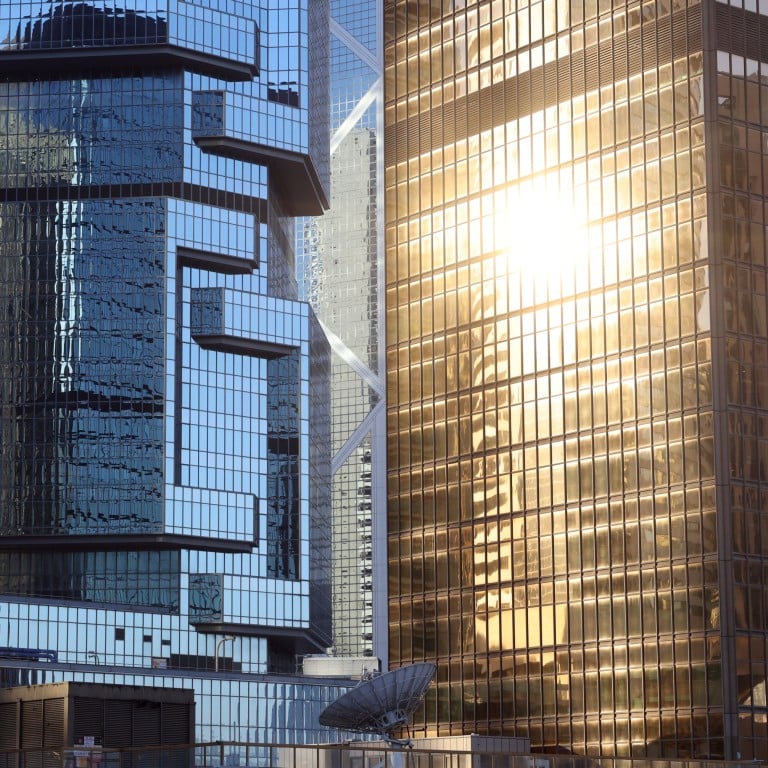
For Hong Kong to reach net zero, rethink our air-conditioned glass boxes
- The city’s buildings account for 90 per cent of all electricity used, and 60 per cent of carbon emissions
- To reduce their carbon footprint, buildings should be designed to engage better with their environment through the warmer and cooler months
Anyone who has spent time in Hong Kong will be familiar with the bone-aching cold of air-conditioning units pumping out freezing air irrespective of the weather outside. In fact, so uncomfortable is the cold of some office spaces that workers wrap up in jumpers and huddle under blankets, regardless of whether the outside temperature is in the mid-30s or, as just recently, below 10 degrees Celsius.
However, this welcome step must be urgently combined with an overall reduction of energy use. We cannot simply rely on new technology to reduce our current carbon emissions; the status quo is not sustainable, and we must find ways of reducing the baseline first.
More importantly, these technologies mask a fundamental fact: more than half of a building’s carbon footprint is to do with material production and transport, construction and “end of life” decommissioning.
Reducing the carbon footprint of Hong Kong’s buildings needs a radical rethink rather than just a sticking plaster and the breakthroughs needed to reach net zero can only happen if there is a mind shift among all stakeholders – legislators, developers, designers and tenants alike.
A starting point would be for our buildings to have a much more considered relationship with the climate in Hong Kong: facades that block the heat more effectively, allow light in when and where it is useful in the summer and, critically, make use of the cool air of the winter and shoulder months to allow a more passive moderation of the internal environment. This would significantly help reduce the energy load of year-round cooling.
The additional costs of climate-conscious facades, either in terms of capital or gross floor area (GFA), can be balanced by reduced operational costs over the building’s life. However, they would be further encouraged with an expansion of the Sustainable Building Design Guidelines (that currently only allow GFA concessions for a limited number of sustainable strategies) and by reducing the current regulatory pressure on facades.

Developers need to play their part, and many are already leading the charge by measuring and better understanding their existing real estate and imposing more onerous requirements than current regulations for the design of new developments. However, their hands are tied when it comes to how GFA is calculated and this puts unbearable budgetary pressure on a range of strategies that could otherwise be used.
Imagine if, instead of being curtailed by how floor area is measured in pure quantitative terms, GFA was assessed qualitatively with a focus on sustainability. This would become an incentive to think differently about a building’s energy in use and embodied carbon over its entire lifespan, and would drive innovation in a way that is very difficult today.
Buildings that engage better with their environment – that have more outdoor amenities, benefit from natural ventilation in the cooler months, and have less air con – would achieve that. I would urge tenants to use their considerable sway, particularly in the current market, to drive a more sustainable agenda.
There are a number of farsighted organisations using their environmental, social and governance (ESG) policies to push progress, and a demand-led approach is often the best way to drive change quickly.
Finally, engineers, architects and landscape architects need to work together in a much more integrated way to reimagine our air-conditioned boxes holistically. A collaborative approach embracing circularity could minimise waste, maximise efficiency and explore opportunities for virtuous cycles where the waste from one part of the design is used as a source of energy for another.
The next 24-36 months will be critical for shaping Hong Kong’s ability to achieve net zero by 2050. Achieving the goal under the Paris Agreement will require everyone connected with the construction industry to work together to reimagine Hong Kong’s cityscape so it is fit for purpose: for the climate, for workers and for our economy.
Matthew Potter is a director at international architecture practice WilkinsonEyre, where he leads the Hong Kong office


